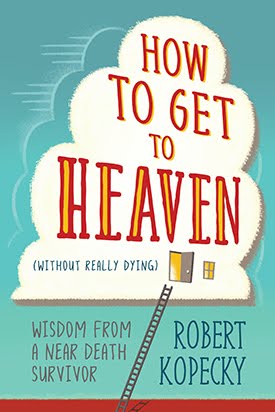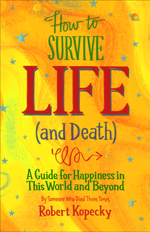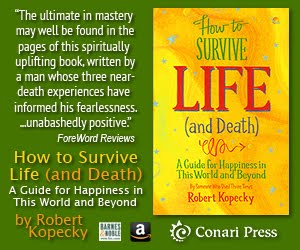These are strange times we live in, the global pandemic, forcing us into a 'quarantined' life and a major economic re-calculation; the unexpected onslaught of authoritarianism – the bizarre betrayal of our standards of fairness and civility by our 'leaders' in what we thought was our solid democracy...and all of it concurrent to the synchronicitous celebration of Spring. Cooped-up like this, it's easy to be overtaken by a rebellious urge, an urge that arises from the underlying sensation that things just aren't the way they're supposed to be. Life is absurd and crazy. Life is harsh and unjust. And this enforced isolation can make us feel that we're living in a personal exile of sorts, separated by the unfair complications of material life from a source of contentment and wholeness that we're naturally heir to – a source from within that we're currently forced to seek (and that we may occasionally be succeeding in finding).
For me it seems that seeking and finding almost requires my being troubled – experiencing this profound discomfort to force me down the hard path that may eventually lead to inner peace. Then in those liberating moments when I manage to get there – however brief they are – I find a familiar, comfortable knowledge, an understanding when I seem to I know why I'm here.
That, in a nutshell, is my experience of Gnosis – that rebellious urge to root out and live within Life's greatest solution.
"Get outta that state – outta that state you're in!
The B 52s, Private Idaho
Simply put, Gnosis (coming from the Greek, for knowledge) is that knowledge – that understanding of transcendent being and belonging-to – that naturally arises from within our hearts. Inspired by the inner longing to reunite with a serene, unifying power that we inherently know to be our benevolent source, Gnosis isn't a product of any science, or even philosophy or religion, really. Instead, Gnosis is a personal discovery based in self-exploration and inner experience, and as such, it's experienced both as a process, and as a state-of-being.
It's natural that Gnosis is the product of that rebelliousness – after all, it is a search that requires rocking the boat a bit (or in this case, being stuck in this shaky little boat), since you have to abandon the definitions and conventions of who you are supposed to be, and what society says is important in order to open to a state of inner completion that really isn't available through any outer norms, religions, or institutions. In all its incarnations throughout human history, Gnosis has been the product of that personal alchemy, likened not only to the Hindu process of samadhi sought through forms of yoga, but also to the spiritual rebellion that led The Buddha to nirvana.
That's also why the search for Gnosis was originally associated with the early growing Christian insurrection. These pre-Christian rebels developed a process, a mythology, and a language of metaphor (including the idea of 'resurrection') that would lead an individual to enlightenment through personal inner experience, completely at odds with all of the prevailing religious institutions of the time – even Christianity itself.
"Yeshua said: Whoever searches must continue to search until they find. When they find, they will be disturbed; and being disturbed, they will marvel and will reign over All."
The Gospel of Thomas, Logion 2
"The Gnostics," as referred to by academics were specifically those pre-Christian Hebrews and early messianic Christians whose "Messiah" primarily took the form of an inward self-realization of God. Everybody was [and is] a "Christ" in a personal way, or is capable of realizing their very own "Christhood" through an initiation, in which an initiate could dis-identify with the difficulties of their material being by way of an alternative practice of personal ritual, absolute honesty and nonviolence, and unselfish service – which sounds a lot like the things many of us have been forced to realize in our "stay-at-home" surrender, doesn't it?
Of course, in the harsh light of the religious, political, and economic institutions of the day, these alternatives – the social and economic re-alignments, and the realization of a personal divinity – was absolute heresy. The most stubborn sacred cows aren't really sacred at all, they're political and economic. At that time, the Gnostics 'radical' suggestions led to the genocide of these rebellious, peace-loving "heretics."
The nicest, and probably the most influential of these heretics were called "Essenes" (essence, essential), a "fringe" sect of Hebraism that were happy to let the Establishment Pharisees and Sadducees run the show around the second Temple in old Jerusalem, just before the Christian Era. I suspect that like the segment of citizens we today call "Progressives," Essenes also made up a much greater share of the population than reported, but because they rejected destructive commerciality (including slavery), ritual sacrifice, and phony spiritual authority, it was the guys with the hats and swords who miswrote their history, as usual. Theirs was – and is to this day – the essential rebellion of those seeking Gnosis.
(Present day media academics pigeonhole the Essenes as heretics hidden away in the caves of Qumran, near the Dead Sea, where a particularly devoted community of ritual Gnostics made their last stand. In fact, Essenes were less a part of Hebraism and more a spiritual nation of their own, spread out across civilization, and bridging the east to west, and the many disciplines oriented towards enlightenment through inward experience)
Essenes established inns called hospitals, where anyone was welcomed, healed, and fed. They practiced hygiene, strict vegetarianism, and holistic medicine way before any of that was cool. Everyone – man, woman and child – was spiritually equal, possessing the same spark of divinity and spiritual potential for unification with The Divine as anyone else. All that was required was initiation into "the secret teachings" of inward exploration, and the willingness to live a life of compassion and integrity. They were absolutely non-violent, and only participated in commercial and agricultural efforts that benefitted everyone. In short, they lived the ideals of Christianity, before Christianity.
In other online articles I've told a version of the wonderful Gnostic myth of Sophia, the princess of Wisdom, and her descent to earth to elevate humanity through the example of her struggle back up to the light, and her gift of consciousness to mankind through the power of feminine energy. It is the classic myth of metaphor, describing Gnosis in a way that resonates in the heart and mind. Summing up the essential myth of the Gnostic inner journey goes something like this:
Humanity is an expression of a Divine Light imprisoned in a clunky, imperfect plane of existence, surrounded by the beauty of human life and the earthly realm, but victimized by the suffering that is such a big part of it all. Each human contains a spark of the Divine Light within, and enduring Life's painful challenges (pandemic, for example) inspires the desire to reunite that inner spark with the great field of Divine Light, our Source, called the pleroma. It sounds quite a bit like Buddhism, doesn't it? That's because it is, in a way – there are ways, in ritual, action, and practice, that the suffering can be avoided.
The self-realization of the light within requires a more austere approach, a set of principles designed to merge the earthly ego with the eternal self; and a community of shared consciousness – individuals who are cooperatively seeking the same state of happiness, wholeness, and purpose.
I find the elemental directness of Gnostic myth and scripture very helpful and instructive in these times of quarantine:
"Yeshua said: When you bring forth that within you, then that will save you. If you do not, then that will kill you.
The Gospel of Thomas, Logion 70
This is what attracted people like Joseph Campbell and Carl Jung to Gnosis and Gnosticism, the fact that it pre-dated every form of modern depth psychology with its remarkable synthesis of human experience into an applicable framework, and an alternative process of rebirth, recovery, and "resurrection" – like that which is forced on us at times like these. It's the timeless story of every authentic spirit's journey from a fearful, semi-conscious "death,” to the wholeness of a compassionately conscious “re-birth.” It symbolizes every individuals shared journey to wholeness and happiness, and the hard path we have to discover to lead us out of this darkness.
"[Mythology inspires] the natural metaphysical impulse to transcend the illusion of separation."
Joseph Campbell
The Gnostics' understanding of Life was finally symbolized not as the iconic early Christian fish logo (submerged in the depths of the divine mystery), but as The Crucifixion Cross, symbolizing the horizontal experience of Life on earth – and the ego-death that's necessary to transcend it by way of the vertical inner knowledge and realization of our true ascendant nature and potential. That's what the cross really means (the Romans actually crucified people on short, X-shaped crosses, to save wood).
So Gnosis begins with an uncomfortability about Life (easy to imagine in the "stay-at-home" mode), and a rebellious dis-ease that moves us to reunite our selves with a wholeness and comfortable being that we're all entitled to. In this way, Gnosis is both a subtractive process – intentionally eliminating the unsupportable expectations and constraints of this style of human life; and it’s an expansive process – bringing us into the consciousness of our limitless potential by merging our damaged, earthly egos with a pure, eternal Love, accessible through our hearts.
But unfortunately, you may have to get a little pent-up first...
"When you make the two into one, when you make the inner like the outer, and the high like the low; when you make the male and the female into a single One…when you have eyes in your eyes, a hand in your hand…and an icon in your icon, then you will enter into the Kingdom."
The Gospel of Thomas, Logion 22
Discover the true Gnosis of the Gnostics, with all its ancient metaphoric mythology, and applications to contemporary spiritual psychology in Gnostic scriptures such as: The Gospel of Thomas, The Gospel of Phillip, The Pistis Sophia, The Gospel of Truth, The Gospel of Mary, and in many fine resources, like: Elaine Pagel's The Gnostic Gospels, Stefan Hoeller’s The Gnostic Jung, and Jung and the Lost Gospels, or in Carl Jung’s Seven Sermons to the Dead, and Answer to Job.
Read about concepts like these and much more in: How to Get to Heaven (Without Really Dying), Wisdom From a Near-Death Survivor from Llewellyn Worldwide available direct on this page, or online. The first book: How to Survive Life (and Death), A Guide To Happiness In This World and Beyond is available the same ways – but ask for it at your local bookstore!











